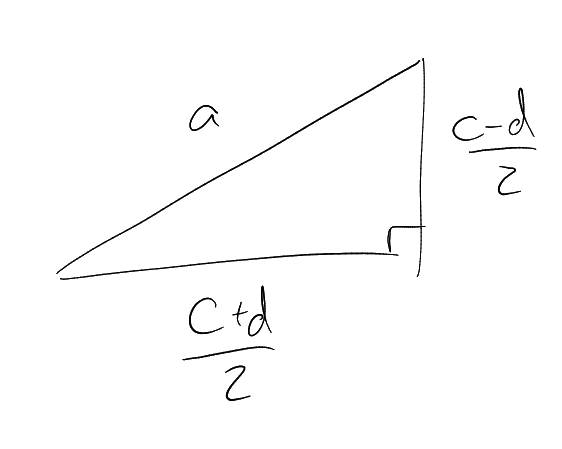

Proof.
Without loss of generality
Then
|
|
and note that all the fractions are integers. Also note that the product on the right hand side is a product of positive coprime integers.
Unique prime factorisation in
Then
Definition (Congruent number).
Note.
It suffices to consider
Example.
Fermat showed that
Proof.
Without loss of generality
Then
Unique factorisation in
|
|
for some
Since
Then consider:
|
|

This is a primitive triangle. The area is
Let
So by Fermat’s method of infinite descent, there is no solution to
(
In Section 1,
Write
Proof.
Without loss of generality
Changing coordinates on
(where
|
|
So Fermat’s method of infinite descent, we get a contradiction, unless the degrees of
Definition 1.5 (Elliptic curve (temporary definition)).
|
|
where
|
|
Fact:
In this course, we study
Lemma 1.2 and Theorem 1.3 tells us that if
|
|
Corollary 1.6.
Let
Proof.
Without loss of generality
|
|
for some
Then
Unique factorisation in